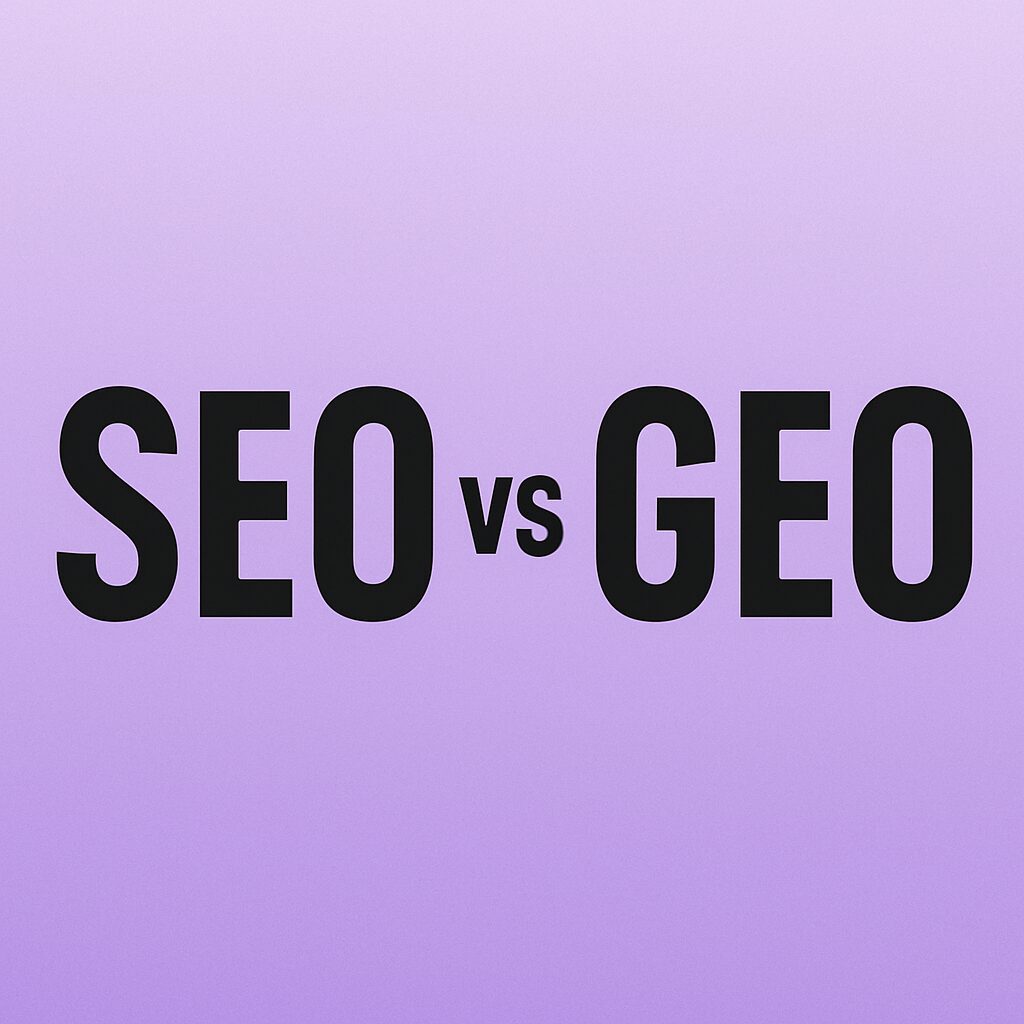- Don't panic! SEO isn't dead, but it is changing. Your goal is shifting from just ranking in a list of links to being mentioned as a trusted source within AI-generated answers. All the hard work you've put into your site is the perfect foundation for this.
- Your new superpower is being human. The best way to get noticed by AI is to prove you're a real expert (E-E-A-T), answer the specific questions your clients are actually asking, and build a brand that people genuinely trust.
- Focus on answering questions, not just targeting keywords. Think about what your clients ask you on discovery calls and in emails. Turn those questions into blog post titles and answer them directly. This is the single biggest thing you can do to win in the new world of search.
- You don't need to be a tech genius to do this. We'll walk you through the simple, practical steps using free or low-cost tools that make a huge difference—no coding required. You've got this!
If you’re anything like us, you’ve poured countless hours (and probably a lot of heart) into your website. You’ve tweaked page titles, written blog posts, and worked so hard to get Google to notice you. So when you hear about AI search tools like ChatGPT completely changing the game, it’s easy to feel a little panicked.
Does all this talk about AI mean your SEO efforts were a waste of time? Is SEO even a thing anymore?
Let’s take a deep breath and talk about it. Because the short answer is: No, SEO is not dead, and your hard work absolutely matters! In fact, the strong foundation you’ve built is more important than ever. Think of it like this: you've built a beautiful house with a solid foundation. Now, it's just time to update the kitchen for a new way of ‘cooking.'
The rules of the game are shifting, but the good news is that as a small business owner, you’re in the perfect position to adapt. Big business might have an advantage when it comes to budget, but small businesses tend to be more agile. You can make changes and pivot way faster than a giant corporation can.
So, let's break down what’s happening, what you should focus on, and how to create a simple, actionable plan—without the scary tech jargon.

Part 1: So, What’s Actually Different? From SEO to GEO
Okay, let’s get to the heart of it. What’s the big deal with this AI search stuff? It all comes down to a shift from Search Engine Optimization (SEO) to what people are now calling Generative Engine Optimization (GEO).
It’s just a fancy way of saying we’re moving from trying to please a search engine to trying to have a conversation with it.
The Old Way (Traditional SEO): You focused on keywords. You wanted to rank for something like “newborn photographer Richmond VA.” Your goal was to show up in that list of 10 blue links on the first page of Google. Success was measured by getting clicks.
The New Way (AI-Powered Search & GEO): People are talking to AI like it’s a person. Instead of typing a few keywords, they’re asking full questions, like: “What should I look for when hiring a newborn photographer in Richmond, and can you show me some with a light and airy style?” The AI’s goal is to provide a single, helpful, summarized answer.
Your new goal is to have your business mentioned in that summary.
See the difference? You’re moving from trying to win a spot on a list to becoming a trusted resource that the AI wants to quote. It's less about traffic and more about trust.
Here’s a little table to help it sink in:
| Aspect | Traditional SEO (The Past) | Generative Engine Optimization (GEO) (The Future) |
| Primary Goal | Rank high in a list of links. | Be cited or referenced within an AI-generated answer. |
| Core Unit | Keywords and Backlinks. | Meaning, Questions, and Brand Mentions. |
| Content Focus | Long-form, keyword-optimized content. | Concise, super-structured, conversational, and helpful content. |
| Success Metric | Website traffic and click-through rate. | How often your brand is mentioned as a trusted source. |

Part 2: 3 Tips for Optimizing Your Showit Website
You don’t need to get a degree in computer science to do this well. If you focus on just these three things, you’ll be way ahead of the curve.
Think of these as a flywheel—the more you do one, the more it helps the others, and soon enough, you'll have unstoppable momentum!
Tip 1: Prove You’re a Real Expert (That’s You!)
This is something we talk about all the time, and now it’s become increasingly important in the era of AI. Google’s AI wants to recommend legitimate, trustworthy businesses. It looks for signals of Experience, Expertise, Authoritativeness, and Trustworthiness (E-E-A-T).
You’re not a faceless corporation; you’re a real person with real skills and stories.
Actionable Steps:
- Beef up your About Page: It should tell your story. Who are you? Why do you do what you do? Show your face!
- Showcase customer reviews and testimonials everywhere! Don't just keep them on a single page. Sprinkle them throughout your site.
- Create detailed author bios: For every blog post, have a little bio for the writer (even if it's just you!). Include your picture, title, and a sentence about your experience.
- Write case studies: Don’t just show the pretty pictures from a project; explain the process and the amazing results you got for your client.
Tip 2: Answer Questions, Don’t Just Target Keywords
This is the biggest mindset shift. Your ideal client isn’t just typing “brand designer” into Google anymore. They’re asking specific, detailed questions. Your job is to answer them better than anyone else.
Think about the questions you get from clients all the time:
- “How much should I budget for a brand designer?”
- “What’s the difference between a logo and a full brand identity?”
- “What do I need to prepare before I hire a copywriter?
Take a few minutes and create a list of the questions your clients and prospective clients ask you. Then expand on that list by including the questions they should be asking you. If you feel like your list is still too short, run those ideas through ChatGPT and ask it to expand on those ideas. These ideas make for great blog, YouTube, and social media content.
Actionable Steps:
- Use questions as your blog post titles. Literally. Title your next post: “What are the best fonts to use in website design?”
- Answer the question immediately. In the very first paragraph, give a direct and concise answer. Then, you can use the rest of the post to go into more detail. This “inverted pyramid” style is perfect for AI.
- Write conversationally. Read your content out loud. Does it sound like a real person talking? If not, rewrite it until it does. Use “you” and “I.” Be a human!
If you already have lots of content on your website, you can run those posts through an AI platform like ChatGPT and ask it for recommendations for improving the format of the post for AI search.
Tip 3: Give AI a Clear Roadmap to Your Site (It’s Easier Than You Think!)
Okay, stick with me here. There’s a thing called “structured data” or “Schema Markup.” It sounds technical, but there are really easy ways to implement it on your website that we’ll get to in a moment.
A simple way to understand structured data is to think of it as a way to label the information on your website so that AI understands it perfectly.
For instance, recipe websites typically format their recipes using schema markup so that search engines understand it’s a recipe. There’s schema markup for all sorts of other things too such as reviews, products, local businesses, how-to articles, and FAQs.
What you’re trying to do is clearly communicate with AI platforms, Google, and other search engines in a language that they clearly understand.
Using Schema Mark is not the only way to do that. Another is to ensure you’re using the proper HTML tags while designing your Showit website.
Actionable Steps for Showit users:
- Use headings: Headings are an easy way to structure the content on the page in a way that makes content more readable by both humans and AI. As a reminder, only one h1 should be used (that’s often the title of the post), and then h2s and h3s should be used as needed.
- … and lists. Use bulleted and numbered lists whenever you can. AI loves easy-to-scan lists.
- Generate your Schema Markup. You don’t need to code this yourself! There are free tools online called Schema Markup Generators. You just fill out a form with your business info (like name, address, phone for LocalBusiness schema, or your Q&As for FAQPage schema), and it spits out a little piece of code.
If your Showit website has a WordPress blog, this is even easier! SEO plugins like RankMath, Yoast, or AIOSEO have structured data features built right in.
For example, when you’re writing a blog post, you can use RankMath to add a block to the editor specifically for FAQs (FAQ by Rank Math). You just type your questions and answers into the block, and the plugin automatically generates the correct, clean schema code behind the scenes. No copying, pasting, or code generators needed! - Check your work! Use Google's “Rich Results Test” tool to make sure you added the Schema Markup correctly.
- HTML Tags: Make sure you’re using the proper HTML tags when building your Showit website. If you bought your template from the Showit store or a trusted Showit Design Partner, this should be done correctly (but be sure to pay attention as you customize it!).
Paying attention to on-page SEO (how you structure your web pages) is a non-negotiable for GEO.
Part 3: Your Budget-Friendly GEO Toolkit
You don't need to spend a ton of money on fancy software. Here are our favorite (and mostly free!) tools to get the job done.
Note: Of these tools, we spend most of our time in Google Search Console and SurferSEO. We didn’t list ChatGPT as a tool, but it has become an invaluable part of our workflow and we often use it to generate ideas, revisions, crunch data (like keyword research), and optimize posts.
Another tool we didn’t mention is Ubersuggest because it’s a more traditional SEO tool. But we still use Ubersuggest for keyword research (and to run SEO audits on our sites). Expect to see traditional SEO tools continue to add features geared towards GEO.
| Tool | What It's For | Price | Our Tip |
| Google Search Console | Seeing how people find you | Free | Look at the “Queries” report to find real questions people are already asking to find your site. |
| SurferSEO | Content research, content creation, and tracking results | Starts at $79/mo | This is Davey’s favorite SEO/GEO tool. If you have a budget for a tool, this is a good place to start. |
| AnswerThePublic | Finding questions to answer | Freemium | A goldmine for blog post ideas. Type in a topic and see all the “who, what, why” questions people search for. |
| AlsoAsked | Visualizing related questions | Freemium | Great for understanding how one question leads to another, helping you create a whole series of helpful content. |
| Schema Markup Generator | Creating schema code | Free | Use this to easily create the code for your Local Business info and FAQ pages. No coding skills required! |
| Your Brain & Notes App! | The ultimate source of truth | Free | Seriously! Keep a running list of every single question a client asks you on a call or in an email. This is your most valuable content plan. |

Part 4: How Do I Know If This Is Working? (And How Long Does It Take?)
Remember, this is a marathon, not a sprint.
Tools like SurferSEO are rolling out features that will make it easy to track your progress in AI search. But you don’t need to pay for a tool to track your progress…
A Simple Tracking Method:
- Create a spreadsheet. In one column, list your 15-20 most important customer questions.
- In the next columns, list the AI tools you want to check (Google, ChatGPT, etc.).
- Once a week, ask those questions to the AI tools and see what they say.
- Log the results. Did they mention you? A competitor? Nothing at all? Use a simple code (like ‘M' for Mentioned, ‘C' for Competitor) to track it. Over time, you'll see your ‘M's start to go up!
A Realistic Timeline:
- Months 1-3: This is foundation-building time. You're creating and structuring content. You probably won't see many results yet, and that's okay!
- Months 4-6: You might start to see your first mentions for very specific, less competitive questions. This is a sign it's working!
- Months 6-12+: As you continue to publish helpful content and build authority, you'll start to see more consistent mentions for more important topics. Patience and consistency are everything.
The Bottom Line
This shift in search isn’t something to be afraid of. It’s actually an amazing opportunity for small businesses like ours.
For years, SEO has felt like a game of trying to please a mysterious algorithm. Now, the path to success is being more human. It’s about sharing your expertise generously, answering people’s real questions, and building a brand that people—and now AI—can genuinely trust.
You’re already doing the hard work. You just need to package it in a way that these new conversational search tools can find and share. You’ve got this!
Part 5: Your Questions, Answered
It’s totally normal to have a bunch of questions about this! This stuff is new and can feel a little overwhelming. Let’s tackle some of the most common questions we see people searching for.
“Is SEO dead in 2025?”
We see this question everywhere, and we get why it’s on your mind! The short answer is: No, SEO is not dead, but it is definitely evolving. As long as people are searching for information, there will be a need to optimize for those searches. The big change is that we're moving from just traditional SEO to also include Generative Engine Optimization (SEO), which is all about becoming a trusted source for AI-powered answers.
“What's the difference between traditional SEO vs. generative engine optimization?”
This is such a great question! Think of it this way:
- Traditional SEO was about getting your website to rank high in a list of links. The main goal was to get someone to click over to your site.
- Generative Engine Optimization (GEO) is about being so helpful and authoritative that your business gets mentioned or cited directly within the AI-generated summary at the top of the search results. Your old SEO work is the perfect foundation for this new approach. It’s not wasted—it’s your launchpad!
“How to rank in AI search results if I'm a small business?”
This is where you can really shine! You don't need a massive budget; you just need to be smart and focus on what matters most. The “80/20” for ranking in AI search is to focus on three things: proving your E-E-A-T (your real-world experience and expertise), writing conversational content that answers specific questions, and making sure your site has a clear structure with proper on-page formatting (think HTML tags and headings) and structured data (as applicable). If you do nothing else, start by creating content that directly answers the questions your customers ask you every day.
“How to implement schema markup for a small business?”
“Schema markup” sounds so technical and scary, but we promise it's easier than it seems! It's just a way of labeling your content so AI can understand it perfectly.
- For WordPress Users: An SEO plugin like RankMath or AIOSEO makes this incredibly simple. They have built-in tools where you can just fill out a form for your business info or create an FAQ section, and the plugin handles all the code for you.
- For Other Platforms: You can use a free online Schema Markup Generator. You just type your information into a form, and it gives you a small snippet of code to copy and paste into your website's settings. No coding from scratch needed!
“How long to see results from generative engine optimization?”
This is a marathon, not a sprint, so it’s important to set realistic expectations. Because this is a new and evolving field, there's no definitive data yet, but we can make a good forecast based on how traditional SEO works. You likely won't see much change in the first three months. But around months 4-6, you might start to see your first mentions for very specific, less competitive questions. By months 6-12, as your authority grows, you should see more consistent results for more important topics. The key is to be patient and consistent!
“How to write an author bio for E-A-T?”
This is such an important piece of proving you're a real expert! Keep it simple. Your author bio should be short (50-100 words) and written in the third person (e.g., “Krista Jones is a brand strategist…”). Be sure to include your job title, years of experience, and any special credentials you have. Adding a professional photo and a link to your LinkedIn or professional social media profile is the perfect finishing touch to build trust.
“Do online reviews really help with SEO?”
Yes, absolutely! Think of reviews as SEO gold. They provide a constant stream of fresh, keyword-rich content from your actual customers. More importantly, they are a huge signal of trust and real-world experience to search engines. Make it a habit to ask happy clients for reviews, and be sure to display those reviews directly on your own website so Google can see them and connect that trust directly to your brand.
“What are some examples of conversational content?”
Great question! It's all about writing like you talk. Instead of stuffy corporate-speak, you're having a friendly, helpful chat.
- Before: “Our firm provides dynamic, synergistic solutions for modern enterprises.”
- After: “We help you stop wasting time on administrative tasks so you can focus on what you do best.” Another great example is using a simple chatbot on your site to ask visitors what they need help with, or creating an interactive quiz to help them find the right service or product.
“What are the best free SEO tools for a small business?”
You don't need to break the bank on tools! You can get so much done with a few amazing free resources. Our must-haves are:
- Google Search Console: To see what questions people are already using to find you.
- Google Business Profile: Essential for any business that serves a local area.
- AnswerThePublic: The free version is fantastic for finding content ideas based on what people are asking.
- A Free Schema Markup Generator: To easily create that special code that helps AI understand your site.
“How do I track my brand mentions in AI search results?”
You don't need fancy software for this! The best way to start is with a simple spreadsheet. List out 15-20 of the most important questions a customer might ask about your services. Once a week, pop those questions into Google, ChatGPT, or another AI tool. In your spreadsheet, just log whether you were mentioned, a competitor was mentioned, or if the answer wasn't relevant. Over time, you'll get a clear picture of how your visibility is growing.

Davey Jones
Davey is a cofounder of the brand & website design agency 'Davey & Krista' and digital marketing agency 'Till Agency'.

